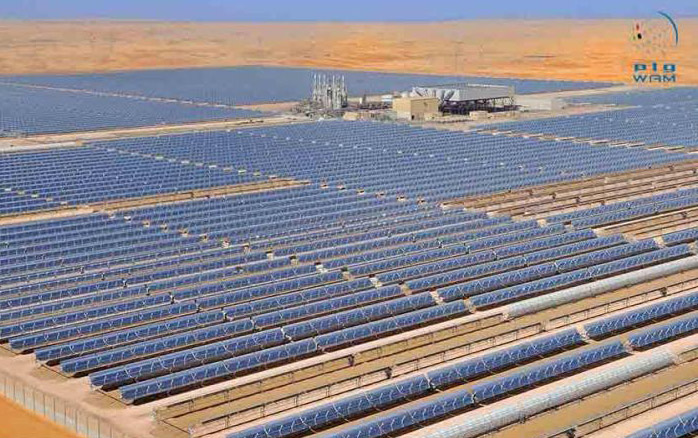ID :
368783
Tue, 05/26/2015 - 10:21
Auther :
Shortlink :
https://oananews.org//node/368783
The shortlink copeid
REmap report findings 2030 highlight economic opportunities for UAE

ABU DHABI, 26th May, 2015 (WAM) -- REmap report 2030, issued by the International Renewable Energy Agency (IRENA), in cooperation with both Masdar and the Directorate of Energy and Climate Change at the Ministry of Foreign Affairs, has revealed that the pricing of solar energy in the UAE has become equivalent to the pricing of energy models based on oil and gas, a move that will give a momentum to shift towards solar energy in the UAE and impact economic feasibility and make the alternative energy commercially attractive.
The report added that the sun is the most important source of renewable energy in the UAE, pointing out that various forms of solar energy will account for 90 percent of renewable energy usage.
The Renewable Energy Map, REmap, presents the findings of the first study of its kind dealing with potential of renewable energy at the national, regional and international levels.
Rapidly increasing natural gas prices and decreasing renewable energy costs are the main drivers for this shift. As recently as 2010, natural gas was available in the UAE at less than US$2 per million British thermal units (MBtu). Today, marginal import prices are in the range of US$ 9-18/MBtu, even after accounting for the potentially temporary price decline of late 2014 and early 2015. New domestic gas production is approaching US$ 8/MBtu in cost and is insufficient to limit growing import requirements. By contrast, local solar photovoltaic (PV) module prices have fallen around 75 percent since 2008.
A number of renewable energy technologies – such as solar PV, wind power, and waste-to-energy – are already proving economical in the UAE at above US$ 8/MBtu, with solar PV potentially competitive with gas prices as low as US$ 4.5/ MBtu. There is a clear financial rationale for accelerated and greater deployment, surpassing the UAE’s existing targets in the power sector.
A 25 percent share of renewables in power generation by 2030 could be cheaper to achieve than the current targets.
The most important enabling factor for renewable energy in the UAE will be the empowerment of government agencies to take holistic, comparative views of energy costs – and to act on these through regulation and/or tendering.
The report said the governance model in the Emirate of Dubai, and the creation of the UAE federal energy policy taskforce, are key local references. In November 2014, the results of a bid for a 100 MW solar PV plant in Dubai were released, setting a world-record low for cost at just US 5.98 cents per kWh and highlighting solar PV’s competitiveness in the Gulf region.
REmap 2030 represents IRENA’s assessment of how countries can work together to double the share of renewable energy in the global energy mix by 2030. It represents an unprecedented international effort that brings together the work of more than 90 national experts in nearly 60 countries. Following the global REmap report released in June 2014, IRENA is now releasing a series of country-specific reports built on the same detailed analysis.
It is a perfect example of the symbiotic relationship between IRENA and its member states, especially here in the Middle East. The report provides the objective, customised data needed to make smart energy choices. – Emirates News Agency, WAM –
http://www.wam.ae/en/news/economics/1395281036919.html





